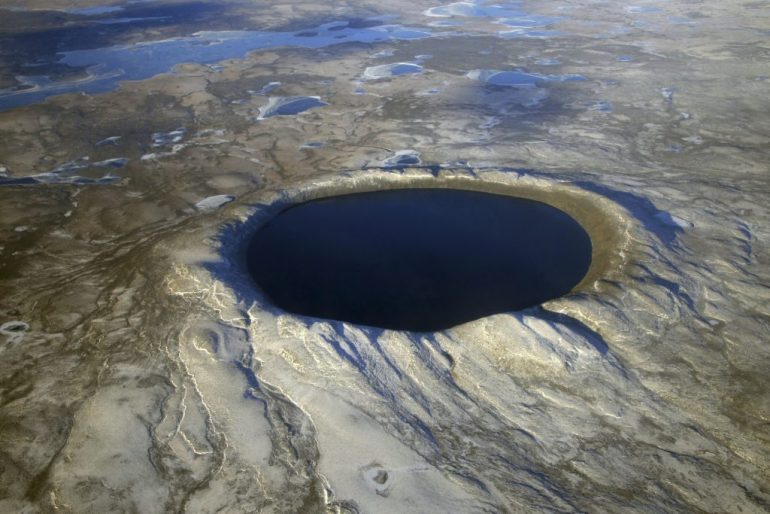Pingualuite Crater in Canada is so huge that it can be seen from space. For a long time only the Inuit, who lived in the snowy north of the province of Quebec, knew him. Meanwhile, the crater is relatively well researched – and the knowledge gained makes it one of the most amazing natural wonders on Earth.
In 1943, while flying over the sparsely populated Ungawa Peninsula in northern Quebec, the crew of a United States Army Air Forces plane discovered a vast, almost perfectly circular lake. In form of NASA writes, the remoteness of the lake prevented a geological expedition until the 1950s. When researchers finally managed to get a closer look at the crater and the first photos became public, they wrote aloud “BBCNewspapers around the world reported at the time what was announced as the Eighth Wonder of the World: Pingualuite Crater.
The measurements showed that the diameter of the crater is 3.44 km and it is 400 meters deep. The lake in the crater is 267 meters deep at its deepest point, which is more than 15 meters deeper than Lake Constance. Of course, the researchers were primarily interested in how this huge, nearly circular lake was formed. By analyzing rock and all sorts of other measurements in and around the crater, scientists were finally able to come up with a scenario for the crater’s formation.

How Pingualuite Crater Was Formed
A giant meteorite from space came here, probably more than 1.4 million years ago and thus in the geological epoch of the Pleistocene. According to NASA, the meteorite vaporized under the impact of an explosion that melted thousands of tons of rock and wiped out all life within hundreds of kilometers of the crater.
According to NASA, the special thing about this lake is that there is neither inflow nor outflow in it. Rain is the only source of water, and water loss can occur only through evaporation. The salinity is extremely low, making it one of the cleanest lakes in the world. Hence the Inuit called it “Nunavik’s Crystal Eye” (Nunavik is the name of the area in northern Quebec). It was given its current name, Pingualuit Crater, in 1999, which roughly translates to “where the land rises”.
Surrounded by an almost lunar-like landscape, Pingueluite Crater is filled with crystal-clear water that is covered with ice for nine months of the year. The Inuit consider this unusually calm place to be a place of immense power, where one comes to regenerate himself. To protect this unique place, the Pingualuite National Park was established around the crater in 2004.
Also interesting: Giant crater in Siberia, which continues to grow
Visit Pingualuite Crater
Those interested can climb Pingualuite Crater on a guided trekking tour or on their own, which is best done during the snow-free summer months. However, the park administration clearly states that you must be in good physical condition and not put yourself at unnecessary risk to explore without a guide. This is especially true in the winter months.

Devoted web advocate. Bacon scholar. Internet lover. Passionate twitteraholic. Unable to type with boxing gloves on. Lifelong beer fanatic.





